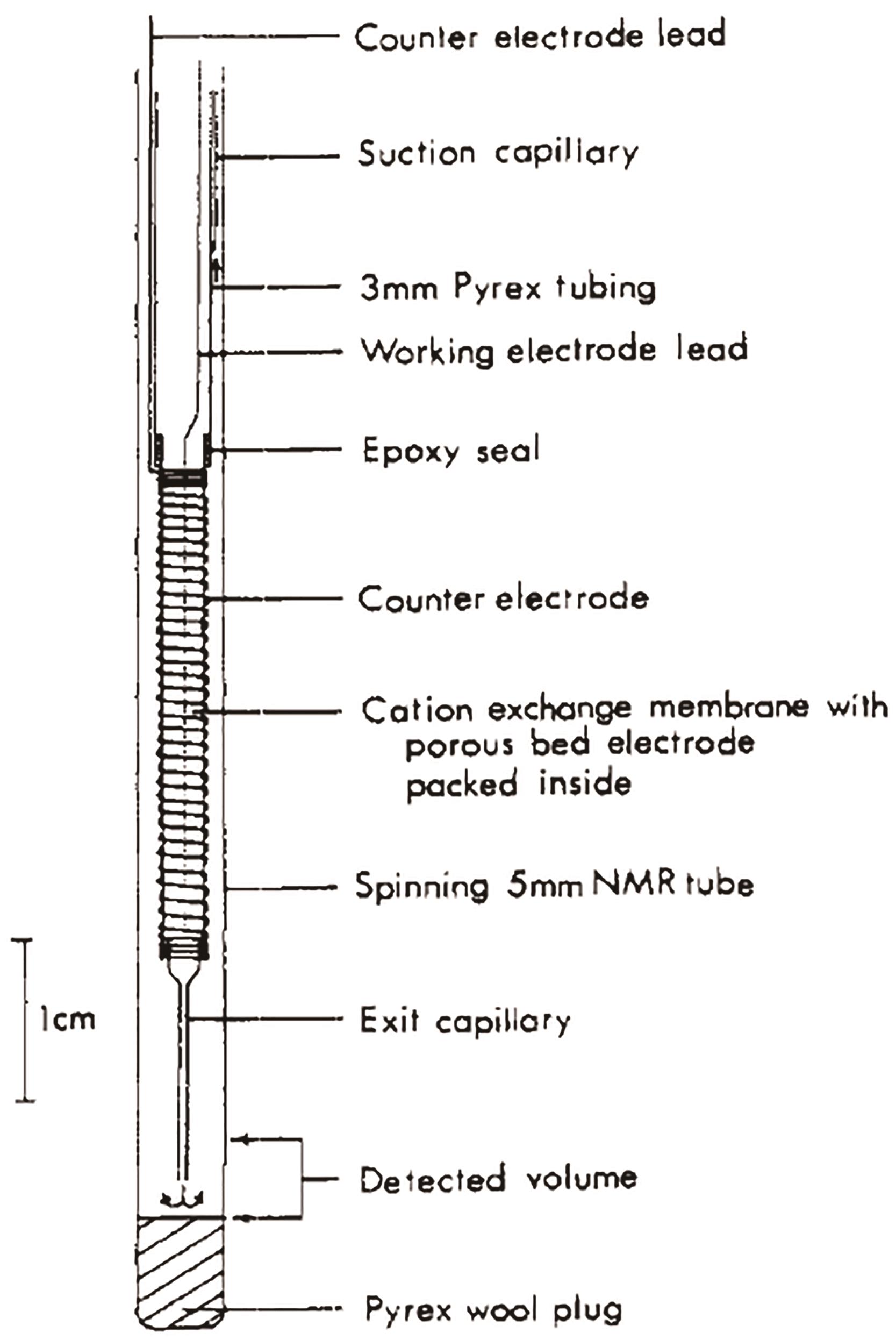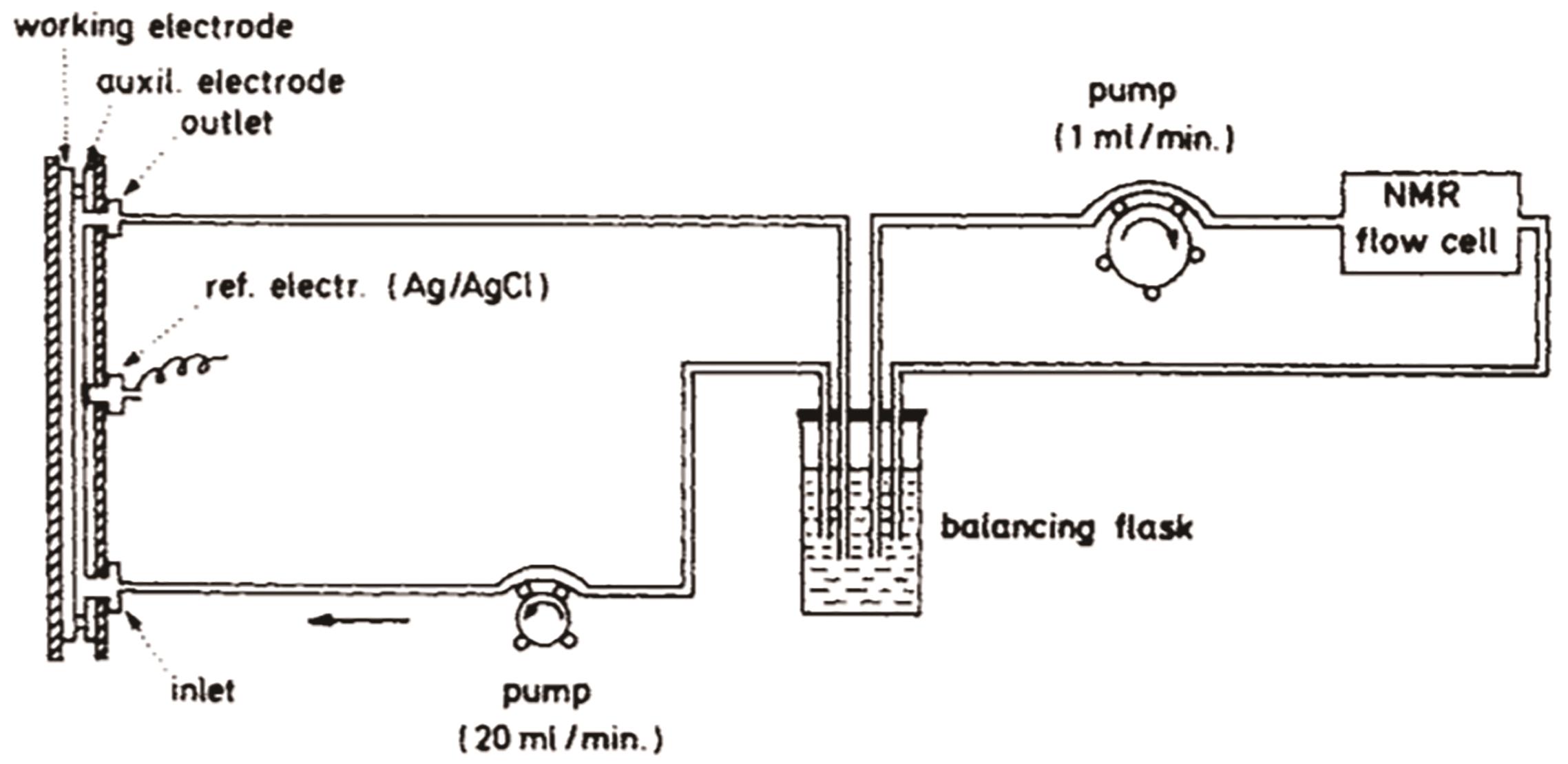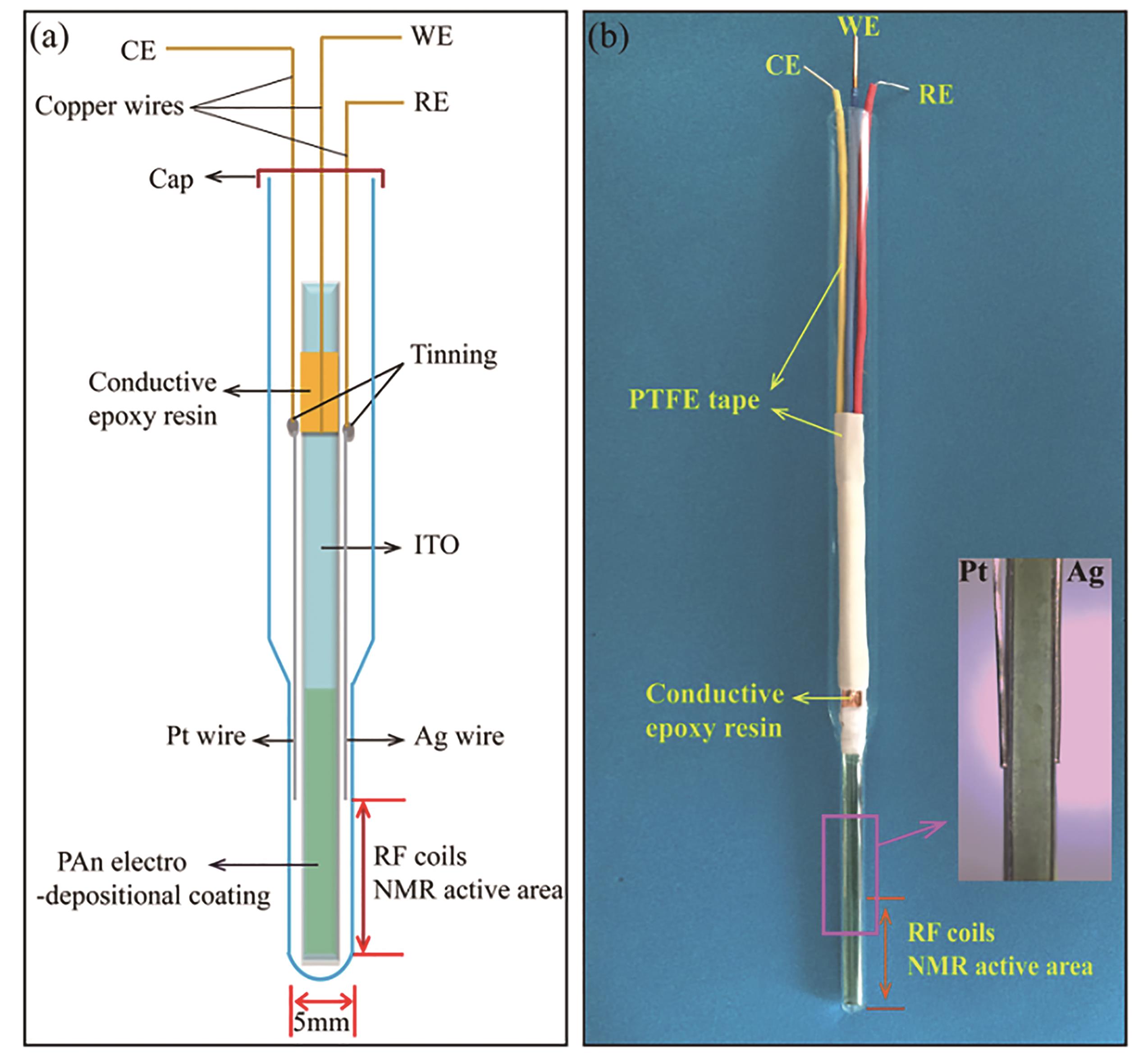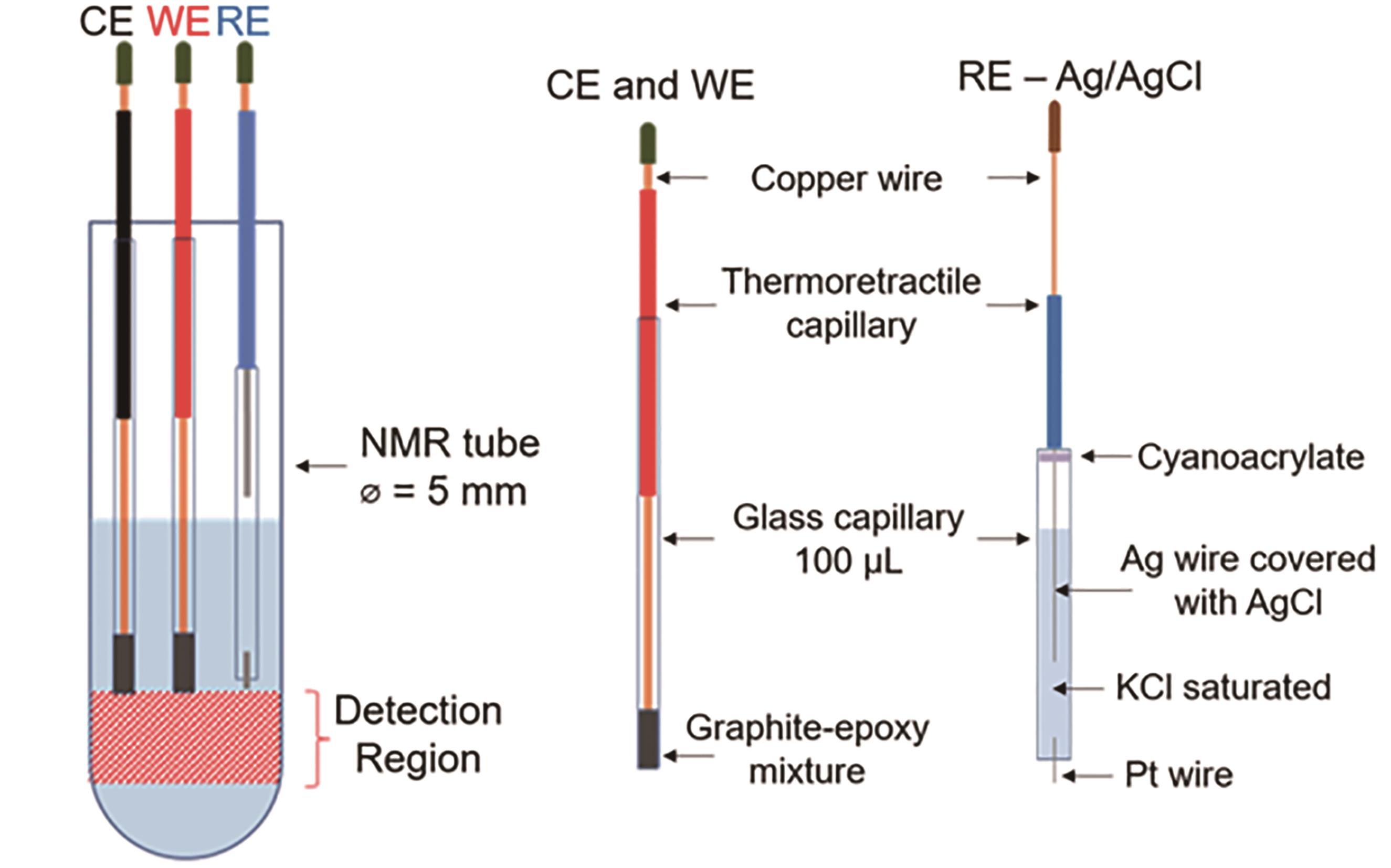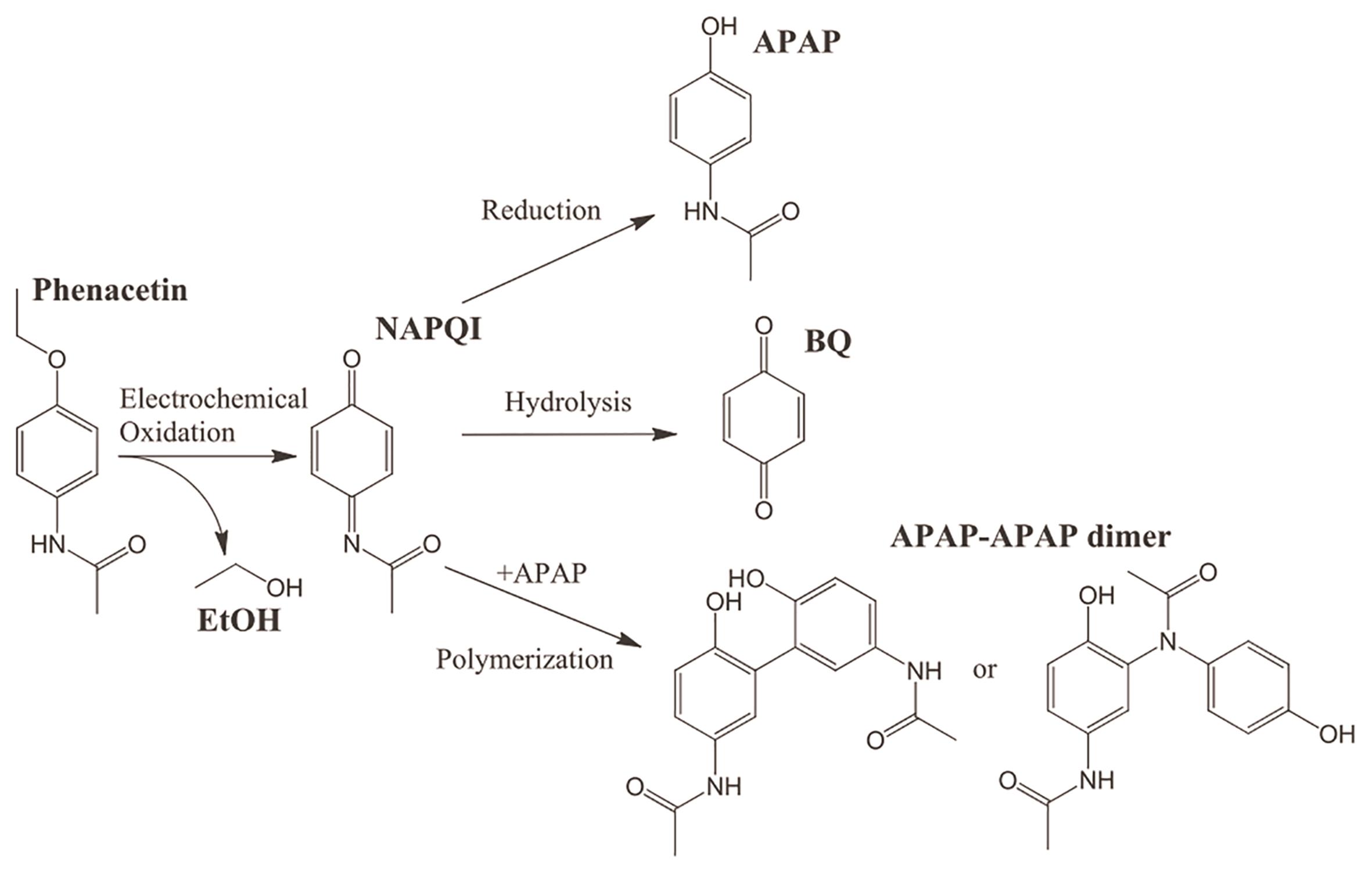
应用化学 ›› 2023, Vol. 40 ›› Issue (3): 317-328.DOI: 10.19894/j.issn.1000-0518.220184
原位电化学与核磁共振联用新技术及其应用进展
张晓萍( ), 张思月, 汪明畅, 张钰桐, 苗莎菻, 王瑜, 孙伟(
), 张思月, 汪明畅, 张钰桐, 苗莎菻, 王瑜, 孙伟( )
)
- 海南师范大学化学与化工学院,海口市功能材料与光电化学重点实验室,海口 571158
-
收稿日期:2022-05-18接受日期:2022-10-12出版日期:2023-03-01发布日期:2023-03-27 -
通讯作者:张晓萍,孙伟
A New Hyphenated Technique of in Situ Electrochemical NMR and the Application Progress
Xiao-Ping ZHANG( ), Si-Yue ZHANG, Ming-Chang WANG, Yu-Tong ZHANG, Sha-Lin MIAO, Yu WANG, Wei SUN(
), Si-Yue ZHANG, Ming-Chang WANG, Yu-Tong ZHANG, Sha-Lin MIAO, Yu WANG, Wei SUN( )
)
- College of Chemistry and Chemical Engineering,Key Lab of Functional Materials and Photoelectrochemistry of Haikou,Hainan Normal University,Haikou 571158,China
-
Received:2022-05-18Accepted:2022-10-12Published:2023-03-01Online:2023-03-27 -
Contact:Xiao-Ping ZHANG,Wei SUN -
About author:swyy26@hotmail.com
25478885@qq.com;
-
Supported by:the National Natural Science Foundation of China Youth Science Foundation Project(22102043);Hainan Provincial Natural Science Foundation of High Level-talent Project(220RC594)
摘要:
电极表面微观的电化学反应动力学机制无法通过孤立的传统电化学方法直接揭示,核磁共振技术能在分子水平上提供待测样品的化学位移和J耦合产生的微小分裂等信息,它可以更容易地鉴定同分异构体、分子构象和电子变化。因此,原位电化学与核磁共振联用技术可以从分子层面上对物质反应机理和反应动力学过程进行原位无损实时研究,发现非原位技术无法监测的短寿命中间体,揭示反应机理和构效关系等相关信息,是一种非常有发展前途的原位谱学技术。但是由于电化学池和核磁共振的不兼容性,对原位电化学与核磁共振的研究及应用相对较少,为了让更多的人了解原位电化学与核磁共振联用这一新技术,文章分别阐述了该技术的国内外进展、工作原理、面临的挑战及其在电化学催化及物质反应机理、燃料电池和药物研究等方面的应用,并对今后需要解决的关键性问题进行了展望。
中图分类号:
引用本文
张晓萍, 张思月, 汪明畅, 张钰桐, 苗莎菻, 王瑜, 孙伟. 原位电化学与核磁共振联用新技术及其应用进展[J]. 应用化学, 2023, 40(3): 317-328.
Xiao-Ping ZHANG, Si-Yue ZHANG, Ming-Chang WANG, Yu-Tong ZHANG, Sha-Lin MIAO, Yu WANG, Wei SUN. A New Hyphenated Technique of in Situ Electrochemical NMR and the Application Progress[J]. Chinese Journal of Applied Chemistry, 2023, 40(3): 317-328.
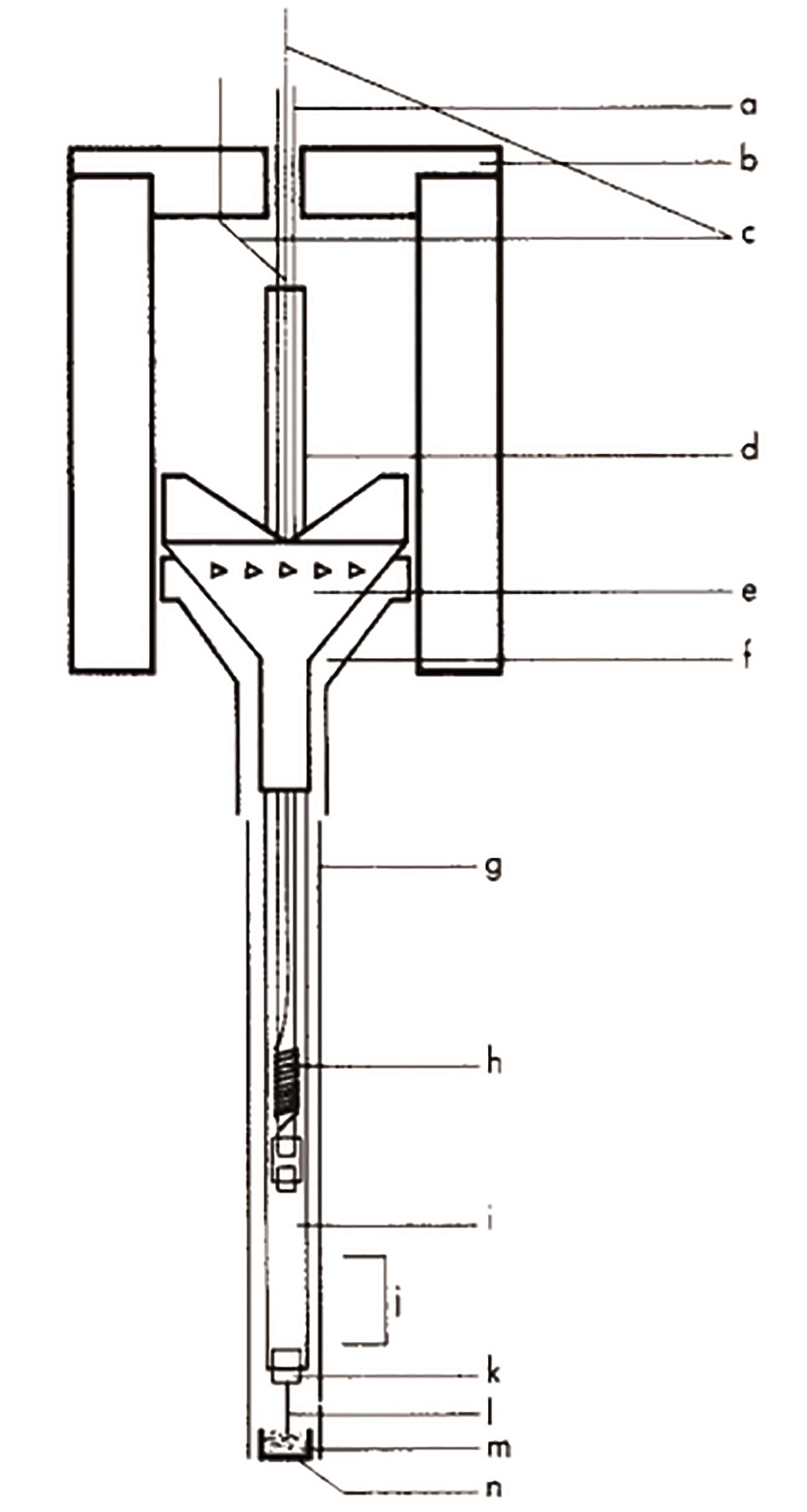
图4 在瓦里安探针组件内部的电化学池[11]
Fig.4 Electrochemical cell inside Varian A-60 probe assembly[11]Note: a.l.8-mm capillary tube; b.Plexlglas cap; c.copper wire leads; d.5-mm NMR tube; e.NMR spinner turbine; f.NMR spinner assembly; g. glass NMR probe tube; h.reference and auxiliary electrode assembly; i.Sb-SnO2 film; j.detector coil length; k.graphite plug; I.narrow graphite rod; m.mercury pool; n.graphite cup
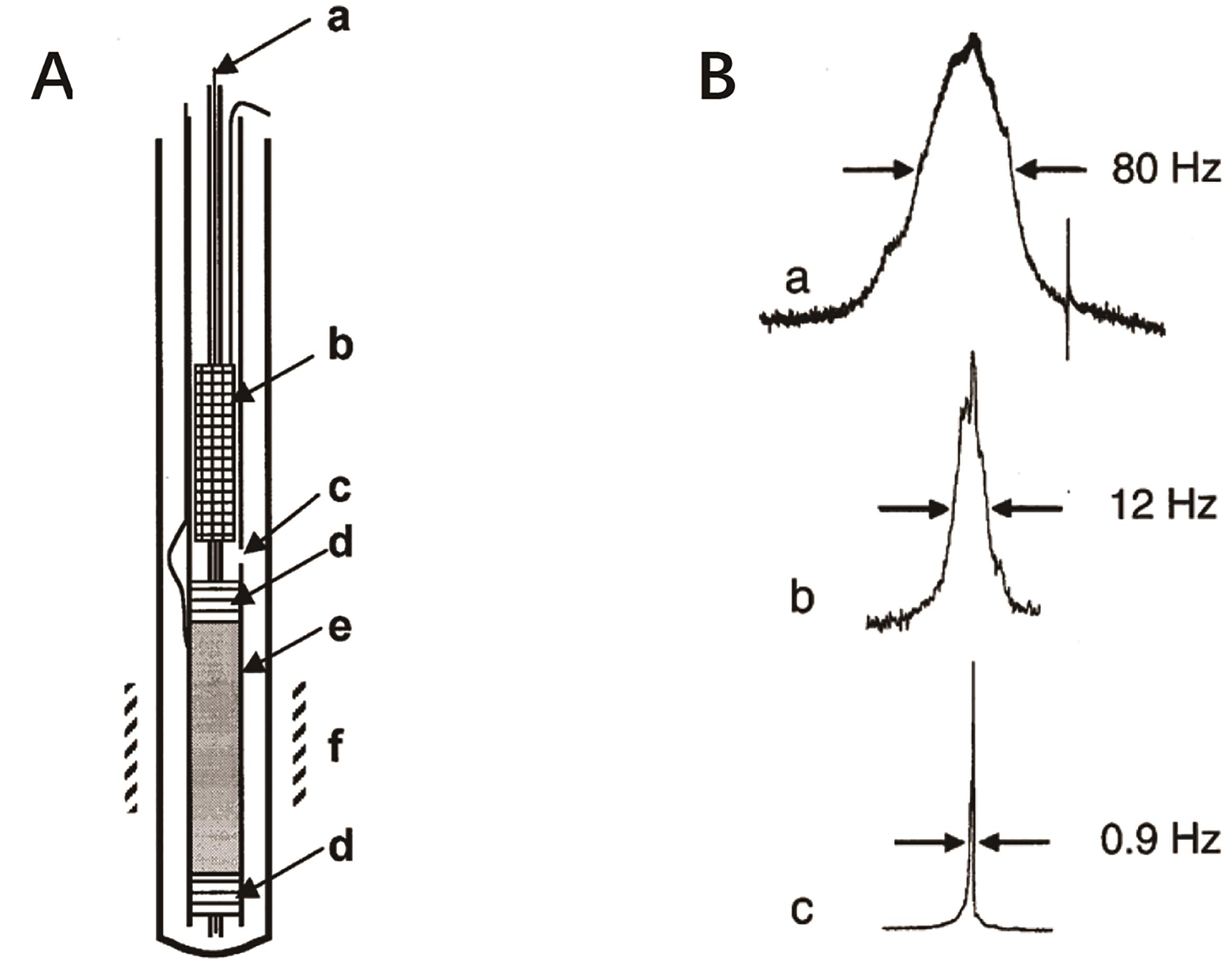
图5 (A) 10 mm NMR样品管中的三电极电解池装置示意图; (B)工作电极对300 MHz谱仪1H NMR信号的影响[12]
Fig.5 (A) Coaxial three-electrode assembly inserted in normal 10-mm NMR sample tube; (B) Effects of the intruding WE on the lineshape of a high-field 1H NMR signal for HOD at 300 MHz[12]Note: A: a.Reference electrode capillary (emerging below working electrode, WE); b.cylindrical Pt-mesh counter electrode (CE); c.pinholes (=4) connecting CE/WE compartments; d.Teflon plugs; e.tubular WE (Au film on glass); f.receiver coils. B: a.spiral Pt wire; b. cylindrical Pt mesh; c.thin Au film
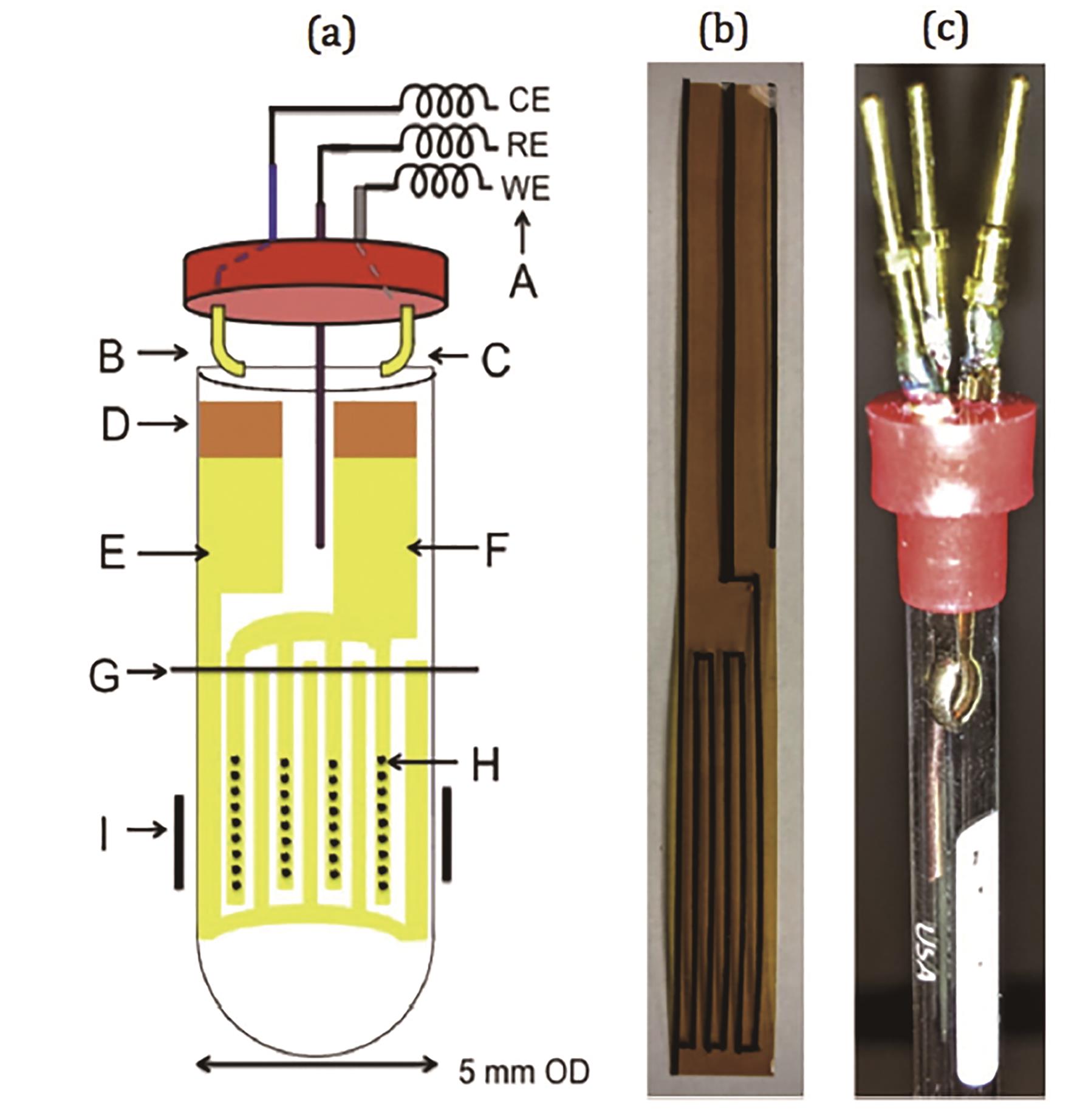
图 6 适用于传统商用探头的交错式金薄膜电极构建的原位EC-NMR装置示意图。 (a)组成为:A.200 μh RF电感器,B.对电极滤波器, C.参比电极滤波器,D.铜胶,E.对电极,F.工作电极,G.核磁管中电解液液面,H.催化剂,I.NMR线圈。 (b)聚酰亚胺上相互交错的金膜,(c)组装完整的NMR装置,(b)中的电极卷成圆柱状插入NMR管[14]
Fig.6 (a) Schematic of the interdigitated gold electrode EC-NMR system setup. The system can be incorporated into a 5-mm commercial NMR tube and thus used in standard high-resolution solution NMR probes. The components are: A. 200 μh inductors as RF chokes, B. Counter electrode electrical finger, C. Working electrode electrical finger, D. Copper tape, E. Counter electrode interdigitated electrode, F. Working electrode interdigitated electrode, G. electrolyte level in NMR tube, H. catalyst, and I.NMR coil. (b) The polyimide (Kapton) strip shown before the mask is removed to reveal the interdigitated gold electrodes. (c) The NMR cap in place on an empty NMR tube. The electrodes in (b) will be rolled lengthwise into a cylinder and inserted into the NMR tube for an experiment[14]

图8 (a) Huang改进后的原位EC-NMR电化学池装置示意图; (b) 铂黑电极上的CVs; (c) 铂钌黑电极上的CVs[18]
Fig.8 (a) Huang′s schematic of the EC-NMR cell adapted from Dunsch et al.′s work; (b) Normal (blue) and ethanol oxidation reaction (EOR) (red) CVs on the activated Pt black; (c) Normal (blue) and EOR (red) CVs on the activated PtRu black[18]
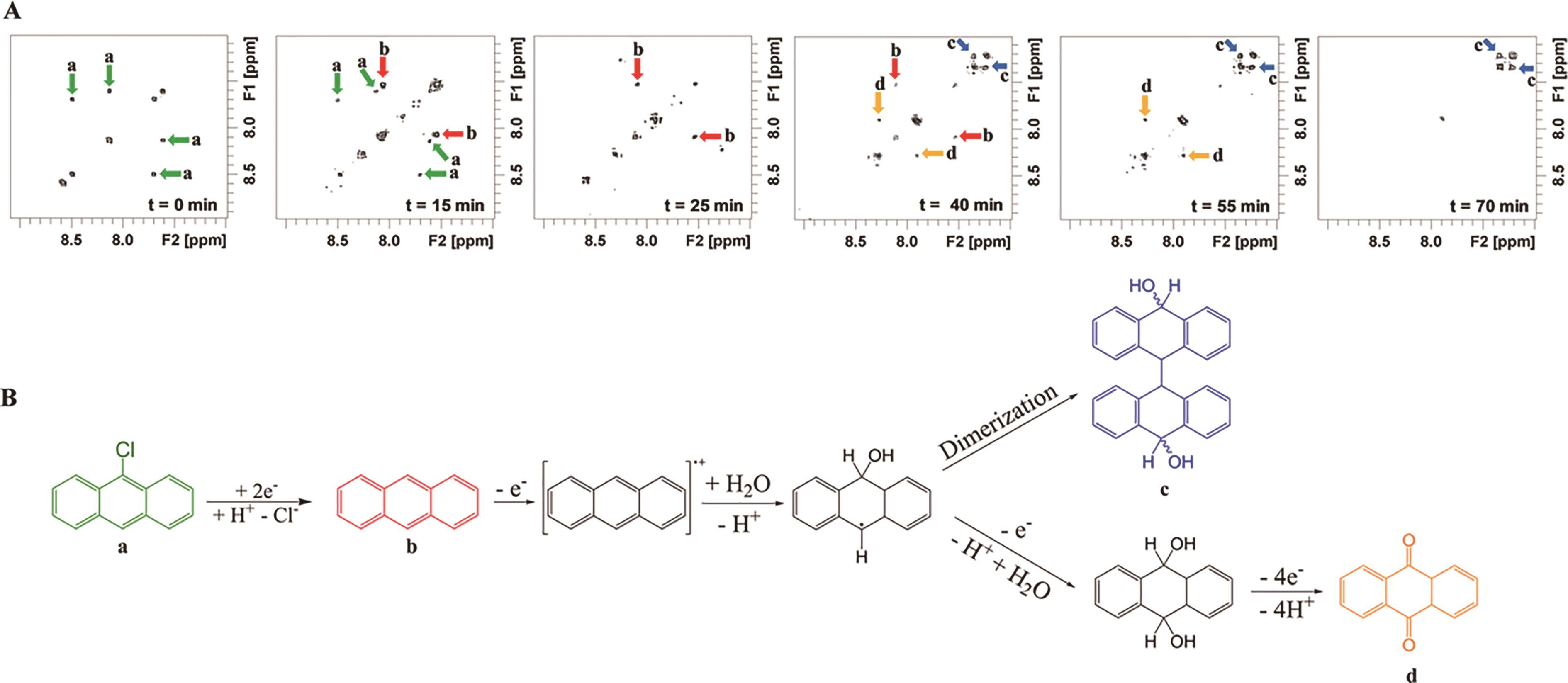
图11 原位EC-NMR记录的9-氯蒽还原反应的2D NMR谱图(A)及氧化还原反应机理(B)[26]
Fig.11 (A) Real-time 2D COSY NMR spectra recorded in situ during the electrochemical reduction of 9-chloroanthracene; (B) Redox behavior of 9-chloroanthracene based on these spectra[26]
| 1 | ZHAO M L, TANG X H, ZHUANG H H, et al. Characterization of complicated electropolymerization using UV-Vis spectroelectrochemistry and an electrochemical quartz-crystal microbalance with dissipation: a case study of tricarbazole derivatives[J]. Electrochem Commun, 2021, 123: 106913. |
| 2 | 孙世刚. 固/液界面现场光谱电化学[J]. 大学化学, 1993, 8(6): 1-4. |
| SUN S G. In situ spectroelectrochemistry at solid/liquid interface[J]. Univ Chem, 1993, 8(6): 1-4. | |
| 3 | SUN S G, CHRISTENSEN P A, WIECKOWSHI A, et al. In-situ spectroscopic studies of adsorption at the electrode and electrocatalysis[M]. UK: The Science Publishing Company, 2008: 139. |
| 4 | BARD A J, FAULKNER L R. Electrochemical methods: fundamentals and applications[M]. 2nd Edition,New York: John Wiley & Sons, Inc. 2001: 669. |
| 5 | RAPTA P, HAUBNER K, MACHATA P, et al. Charged states in diphenylamino endcapped thiophenes with a 1,4-phenylene core: in situ electron spin resonance/ultraviolet-visible-near infrared and nuclear magnetic resonance spectroelectrochemistry and quantum chemical study[J]. Electrochim Acta, 2013, 110: 670-680. |
| 6 | SIMON H, MELLES D, JACQUOILLEOT S S, et al. Combination of electrochemistry and nuclear magnetic resonance spectroscopy for metabolism studies[J]. Anal Chem, 2012, 84: 8777-8782. |
| 7 | DRAGANCEA D, TALMACI N, SHOVA S, et al. Vanadium(V) complexes with substituted 1,5-bis(2-hydroxybenzaldehyde) carbohydrazones and their use as catalyst precursors in oxidation of cyclohexane[J]. Inorg Chem, 2016, 55: 9187-9203. |
| 8 | UGO B, MOHAMMED B. Review of advances in coupling electrochemistry and liquid state NMR[J]. Talanta, 2015, 136: 155-160. |
| 9 | RICHARDS J A, EVANS D H. Flow cell for electrolysis within the probe of a nuclear magnetic resonance spectrometer[J]. Anal Chem, 1975, 47: 964-966. |
| 10 | ALBERT K, DREHER E L, STRAUB H, et al. Monitoring electrochemical reactions by 13C NMR spectroscopy[J]. Magn Reson Chem, 1987, 25(10): 919-922. |
| 11 | MINCEY D W, POPOVICH M J, FAUSTINO P J, et al. Monitoring of electrochemical reactions by nuclear magnetic resonance spectrometry[J]. Anal Chem, 1990, 62: 1197-1200. |
| 12 | PRENZLER P D, BRAMLEY R, DOWNING S R, et al. High-field NMR spectroelectrochemistry of spinning solutions: simultaneous in situ detection of electrogenerated species in a standard probe under potentiostatic control[J]. Electrochem Commun, 2000, 2(7): 516-521. |
| 13 | WEBSTER R D. In situ electrochemical-NMR spectroscopy. Reduction of aromatic halides[J]. Anal Chem, 2004, 76: 1603-1610. |
| 14 | SORTE E G, TONG Y Y J. Interdigitated metal electrodes for high-resolution in situ electrochemical NMR[J]. J Electroanal Chem, 2016, 769: 1-4. |
| 15 | CAO S H, NI Z R, HUANG L, et al. In situ monitoring potential-dependent electrochemical process by liquid NMR spectroelectrochemical determination: a proof-of-concept study[J]. Anal Chem, 2017, 89(7): 3810-3813. |
| 16 | KLOD S, ZIEGS F, DUNSCH L. In situ NMR spectroelectrochemistry of higher sensitivity by large scale electrodes[J]. Anal Chem, 2009, 81: 10262-10267. |
| 17 | BUSSY U, GIRAUDEAU P, TEA I, et al. Understanding the degradation of electrochemically generated reactive drug metabolites by quantitative NMR[J]. Talanta, 2013, 116: 554-558. |
| 18 | HUANG L, SORTE E G, SUN S G, et al. A straightforward implementation of in situ solution electrochemical 13C NMR spectroscopy for studying reactions on commercial electrocatalysts: ethanol oxidation[J]. Chem Commun, 2015, 51(38): 8086-8088. |
| 19 | HUANG L, SUN J Y, CAO S H, et al. Combined EC-NMR and in situ FTIR spectroscopic studies of glycerol electrooxidation on Pt/C, PtRu/C, and PtRh/C[J]. ACS Catal, 2016, 6(11): 7686-7695. |
| 20 | ZHANG X P, JIANG W L, CAO S H, et al. NMR spectroelectrochemistry in studies of hydroquinone oxidation by polyaniline thin films[J]. Electrochim Acta, 2018, 273: 300-306. |
| 21 | WANG J L, YOU X Q, CHI X, et al. Small-sized Pt nanoparticles supported on hybrid structures of MoS2 nanoflowers/graphene nanosheets: highly active composite catalyst toward efficient ethanol oxidation reaction studied by in situ electrochemical NMR spectroscopy[J]. Appl Catal B: Environ, 2019, 259: 118060. |
| 22 | SILVA P, GOMES B F, LOBO C, et al. Composite graphite-epoxy electrodes for in situ electrochemistry coupling with high resolution NMR[J]. ACS Omega, 2022, 7(6): 4991-5000. |
| 23 | HOLZ M, LUCAS O, MULLER C. NMR in the presence of an electric current. Simultaneous measurements of ionic mobilities, transference numbers, and self-diffusion coefficients using an NMR pulsed-gradient experiment[J]. J Magn Reson, 1984, 58(2): 294-305. |
| 24 | HOLZ M, MULLER C. Direct measurement of single ionic drift velocities in electrolyte solutions. an NMR method[J]. Ber Bunsenges Phys Chem, 1982, 86(2): 141-147. |
| 25 | LUIZA M N, TIAGO B M, LUCIO L, et al. Monitoring electrochemical reactions in situ using steady-state free precession 13C NMR spectroscopy[J]. Anal Chim Acta, 2014, 850: 1-5. |
| 26 | BOISSEAU R, BUSSY U, GIRAUDEAU P, et al. In situ ultrafast 2D NMR spectroelectrochemistry for real-time monitoring of redox reactions[J]. Anal Chem, 2014, 87: 372-375. |
| 27 | GOUILLEUX B, CHARRIER B, DANIELI E, et al. Real-time reaction monitoring by ultrafast 2D NMR on a benchtop spectrometer[J]. Analyst, 2015, 140(23): 7854-7858. |
| 28 | ZALIBERA M, MACHATA P, CLIKEMAN T T, et al. 19F NMR-, ESR-, and Vis-NIR-spectroelectrochemical study of the unconventional reduction behaviour of a perfluoroalkylated fullerene: dimerization of the C 70 ( C F 3 ) 10 - radical anion[J]. Analyst, 2015, 140: 7209-7216. |
| 29 | ZHANG X P, SUN W, CAO S H, et al. NMR spectroelectrochemistry in studies of dopamine oxidation[J]. Electrochem, 2020, 88(3): 200-204. |
| 30 | SORTE E G, JILANI S, TONG Y Y J. Methanol and ethanol electrooxidation on PtRu and PtNiCu as studied by high-resolution in situ electrochemical NMR spectroscopy with interdigitated electrodes[J]. Electrocatalysis, 2017, 8(2): 1-8. |
| 31 | AN Y, KLEINHAMMES A, DOYLE P, et al. In situ nuclear magnetic resonance investigation of molecular adsorption and kinetics in metal-organic framework UIO-66[J]. J Phys Chem Lett, 2021, 12: 892-899. |
| 32 | HU J Z, JAEGERS N R, HU M Y, et al. In situ and ex situ NMR for battery research[J]. J Phys Condens Matter, 2018, 30(46): 463001. |
| 33 | HAN O H, HAN K S, SHIN C W, et al. Observation of methanol behavior in fuel cells in situ by NMR spectroscopy[J]. Angew Chem Int Ed, 2012, 51: 3842-3845. |
| 34 | GHASSEMZADEH L, KREUER K D, MAIER J, et al. Chemical degradation of nafion membranes under mimic fuel cell conditions as investigated by solid-state NMR spectroscopy[J]. J Phys Chem C, 2010, 114(34): 14635-14645. |
| 35 | ANNA B G, SUNDEEP V, SVETLANA M, et al. Investigating the effect of a fluoroethylene carbonate additive on lithium deposition and the solid electrolyte interphase in lithium metal batteries using in situ NMR spectroscopy[J]. J Mater Chem, 2020, 8(30): 14975-14992. |
| 36 | 罗民, 杨顺, 李海波. 电化学电容器储能机理的原位表征技术研究进展[J]. 中国科学(化学), 2018, 48(1): 31-44. |
| LUO M, YANG S, LI H B. Advances in the charging mechanisms for supercapacitor by in situ characterization methods[J]. Sci Sin Chim, 2018, 48(1): 31-44. | |
| 37 | HARRIS P. New perspectives on the structure of graphitic carbons[J]. Crit Rev Solid State, 2007, 30: 235-253. |
| 38 | FORSE A C, GRIFFIN J M, WANG H, et al. Nuclear magnetic resonance study of ion adsorption on microporous carbide-derived carbon[J]. Phys Chem Chem Phys, 2013, 15(20): 7722-7730. |
| 39 | POPPE L, KNUTSON N, CAO S, et al. In situ quantification of proteins by HAP-NMR spectroscopy[J]. Anal Chem, 2019, 91, 7807-7811. |
| 40 | MARIA S, NEGAR K, MARCUS R, et al. In situ 13C NMR spectroscopy study of CO2/CH4 mixture adsorption by metal-organic frameworks: does flexibility influence selectivity[J]. Langmuir, 2019, 35(8): 3162-3170. |
| [1] | 赵宇航, 韩超群, 刘瑾, 夏星, 王艺皓, 杨建军. 不同pH条件下典型有机磷核磁图谱差异性解析[J]. 应用化学, 2022, 39(02): 315-321. |
| [2] | 汪海涛, 刘海锋, 刘艳, 赵文博, 高润利, 段晶钟, 张远鹏. 多种分析方法测定邻氯代苯亚甲基丙二腈的纯度[J]. 应用化学, 2020, 37(7): 810-815. |
| [3] | 吴睿, 杨玉琛, 董鑫, 周朝晖. 乙二胺三乙酸与锌(Ⅱ)、钴(Ⅱ)相互作用的固体和溶液化学特性[J]. 应用化学, 2016, 33(1): 70-75. |
| [4] | 康鹏, 郑宗明, 覃吴, 杨勇平, 董长青. 磷酸丙酮法木质纤维素预处理中木质素的分离与表征[J]. 应用化学, 2014, 31(05): 570-576. |
| [5] | 赵桂燕, 徐经伟, 杨卫. 二乙三胺四乙酸双核钆磁共振成像造影剂的合成及其弛豫性能[J]. 应用化学, 2014, 31(02): 225-230. |
| [6] | 王茹林, 王恩成, 秦姝竹, 王鹏. β-环糊精衍生物与吡罗昔康的包合特性[J]. 应用化学, 2012, 29(08): 910-914. |
| [7] | 杨微微, 高翔. 1,2-H(XPhCH2)C60衍生物中取代基团对NMR及电化学性质的影响[J]. 应用化学, 2011, 28(09): 1041-1045. |
| [8] | 王茹林, 姜鸿彦, 秦姝竹, 王鹏. β-环糊精对氯诺昔康的包合作用[J]. 应用化学, 2011, 28(04): 421-425. |
| [9] | 鲍霞, 张小玲, 王凤武. 5-Br-PADAP UV-Vis光谱的溶剂效应[J]. 应用化学, 2006, 23(7): 757-761. |
| [10] | 祁欣, 徐莉, 彭孝军. 碱性条件下顺(2-乙酰胺基-1-溴-2-(对-甲氧基苯基)乙基)膦酸二乙酯的1,2消除反应[J]. 应用化学, 2005, 22(2): 180-183. |
| [11] | 黄庆华, 严军国, 徐敏, 张惠平, 陈群. 氧化时间对多壁纳米碳管结构与性能的影响[J]. 应用化学, 2005, 22(1): 59-62. |
| [12] | 张玲, 曾兆华, 杨建文, 张夏虹, 陈用烈. 光固化聚氨酯丙烯酸酯杂化材料的核磁共振谱[J]. 应用化学, 2004, 21(3): 291-295. |
| [13] | 张蓉, 靳焜, 彭勤纪, 张华. 蓖麻油和聚氧乙基蓖麻油的结构和组成的波谱表征[J]. 应用化学, 2002, 19(4): 373-376. |
| [14] | 席海涛, 孙小强, 王乐勇, 杨杨. 可调控准轮烷的合成和开关性能的研究[J]. 应用化学, 2001, 18(5): 400-403. |
| [15] | 王鹏, 朱果逸. 疏水型邻菲咯啉铁(Ⅱ)配合物的合成、表征及其电化学行为[J]. 应用化学, 2000, 17(1): 6-10. |
| 阅读次数 | ||||||
|
全文 |
|
|||||
|
摘要 |
|
|||||

